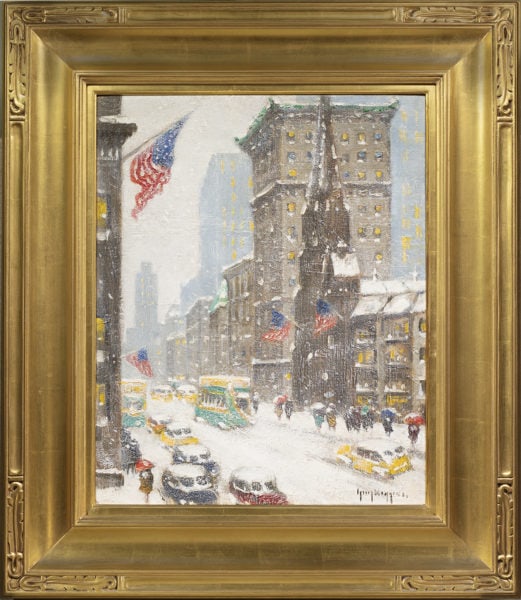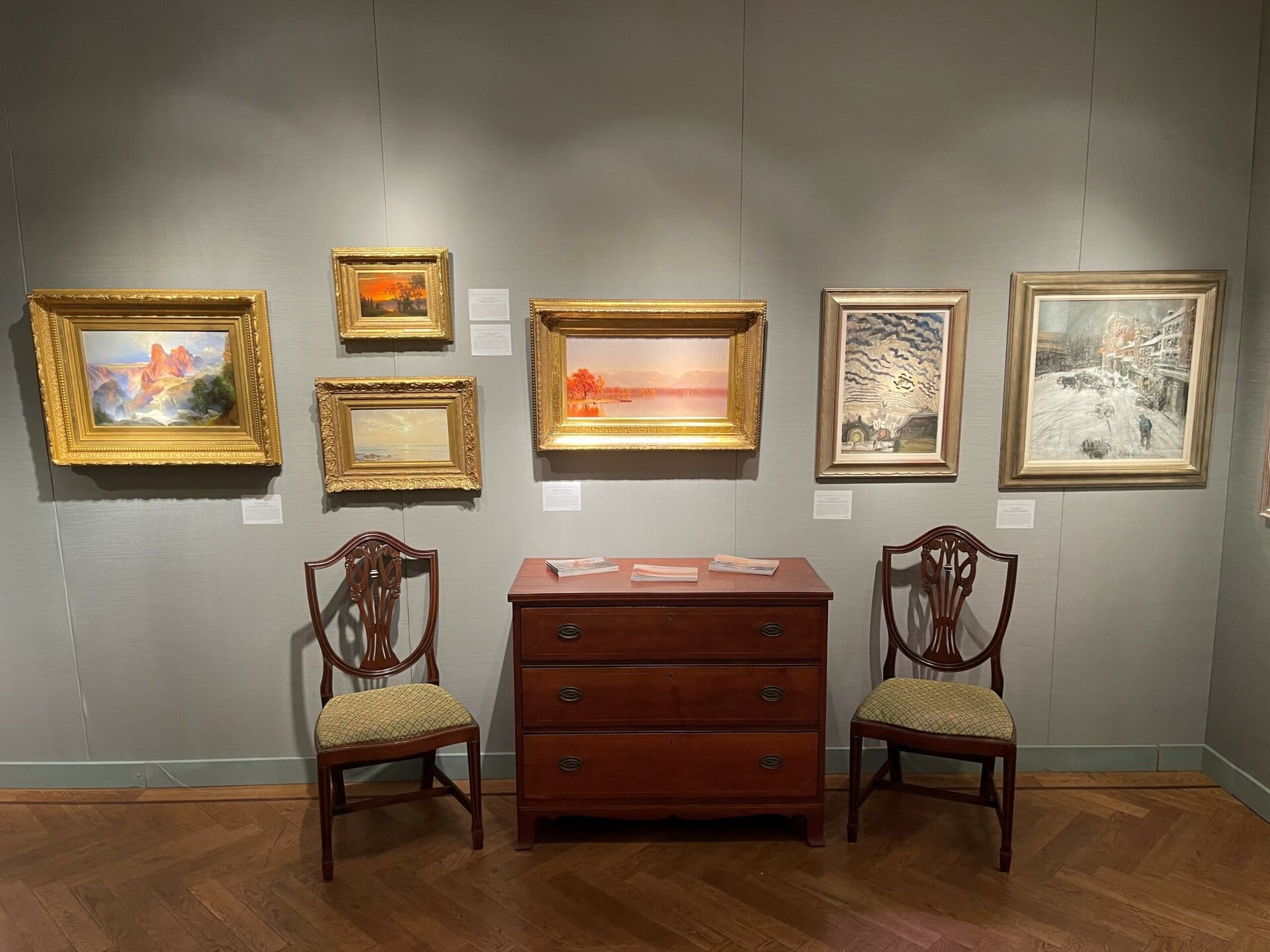Guy C. Wiggins and His Vision of Snow-Covered New York

By Alexandra Kiely of “A Scholarly Skater”
A recent acquisition at Questroyal Fine Art, Winter at 57th St and 5th Avenue* is a classic example of Guy C. Wiggins’s beloved New York City snow scenes. With its impressionist snow flurries, colorful flags, and busy street, this painting presents the ideal image of a wintery Manhattan.
The Wiggins family is one of America’s great artistic dynasties. Father Carleton Wiggins (1848–1932) was a landscape painter mentored by George Inness. Guy C. Wiggins (1883–1962), painter of Winter at 57th St and 5th Avenue, was the most successful of the family. Grandson Guy A. Wiggins (1920–2020) painted similar subject matter to that of his father.
Guy C. Wiggins studied first with Carleton and later at the National Academy of Design under Robert Henri. Wiggins also spent time at Florence Griswold’s boarding house in Connecticut, the unofficial headquarters of the Old Lyme art colony of American impressionists. Much heralded for his talents from an early age, Wiggins was the youngest American artist to have his work in the Metropolitan Museum of Art when the institution bought his Metropolitan Tower in 1912. Even while working in New York, Wiggins maintained a home in Old Lyme, and he established his own art school there in the 1930s.
While Guy C. Wiggins’s art doesn’t look much like his father’s Barbizon-inspired landscapes, it clearly reflects his other influences. Impressionist brushwork like that of the Old Lyme circle softens urban subject matter reminiscent of Henri. Although Wiggins also painted other cities, other seasons, and even some rural subjects, New York City snow scenes take pride of place as his most admired works.
Winter at 57th St and 5th Avenue is an appealing mixture of the real and the ideal. In it, New York City is easily recognizable. The tall buildings, traffic, and pedestrians feel distinctly modern and vibrant. Warm, inviting yellow lights punctuate the many windows, while cabs and American flags—the latter in particular are beloved features of many Wiggins’s snow scenes—add lively splashes of color. Snow falls through the air, creating a hazy atmosphere and blanketing the lower part of the painting. Wiggins’s cheerful tone and impressionist paint handling idealize the scene, foregoing the drab realities of a city snow storm. Grey-toned skyscrapers in the distance speak to New York City’s grand scale, but the rest of the composition focuses on a more intimate snippet of city life.
Snowy but clean, cold but inviting, grand but intimate—Winter at 57th St and 5th Avenue is the New York City of our dreams.
*This painting has since been sold. View currently available works by Guy C. Wiggins here.
Alexandra Kiely is an independent art historian based in the greater New York City area and owner and writer of art history website “A Scholarly Skater,” which includes over four hundred articles about ancient through contemporary art and architecture, many aimed at promoting the appreciation of historical art in a greater public.



